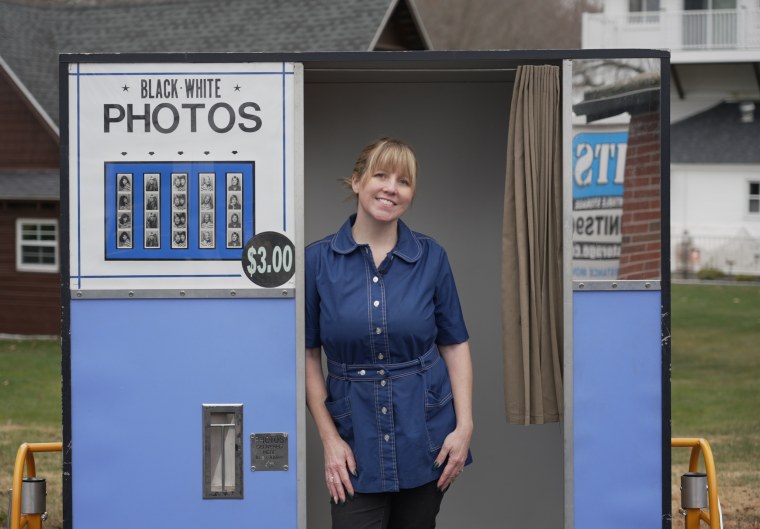In 1925, Anatole Josepho invented the automated photo booth in New York City, originally called the “photomaton.” Nearly a century later, historians say there are only 200 working analogue photo booths left. One of them made its way to downtown Manhattan.
After traveling to Paris and seeing accessible analogue photo booths on the streets, Zoe Lazerson, 27, and Brandon Minton, 25, wondered why there were so few booths available in their city, New York.
“It’s the oldest selfie,” Lazerson said.
Determined to share their love of analog, the couple purchased a photo booth from an owner in St. Louis. After doing some research, they committed to a 30-hour round trip to transport it back to the Lower East Side.
The investment has proven to be worth it. Their photo booth, called “An old friendwas successful, garnering support from a younger generation eager to be swept up in the moment by century-old technology.
“I think there’s something about having a physical image in your hand,” said Marlon, a customer at the kiosk on a sunny winter day.
On average, the booth goes through 400 to 700 film strips daily. The cost of each session is $8. “We were in line for up to an hour and a half,” Lazerson said.

While the Analog Pavilion has proven successful as a commercial venture, its continued operation poses unique challenges. Analog photo booths require regular maintenance, and the technology required to keep them running often includes parts that are no longer manufactured.
Migs Fitzgerald, 37, a photo booth historian, is an active member of a 50-strong tight-knit community of booth technicians, owners, collectors and enthusiasts.
“It’s 70-year-old technology in most cases, and in some cases it’s older, and the parts are fragile and can break,” she said.
When digital technology came along, Fitzgerald said, many companies no longer saw the point in going through the hassle of keeping analog kiosks alive, eventually replacing analog chemistry cabinets with instant digital printouts.
“In the early digital era, in the late 1990s or early 2000s, these big photo booth companies were rushing to retire these analog machines and replace them with digital machines,” she said.
Some kiosks have been effectively transformed into zombies, keeping their old look on the outside but replacing the digital parts inside. Others were completely destroyed and ended up in landfills. “However, a lot of the knowledge about how to service photo booths has died,” Fitzgerald said.
Bree Conley, 41, understands the complex nature of photo booths all too well. Conley, a former wedding photographer, owns about 50 photo booths, 20 of which she operates in seven states while she works to restore and put up the rest.

“My whole goal was to get as many kiosks as possible and put them in places where anyone could use them,” she said. Conley and other enthusiasts have compiled a list of every analogue photo booth in existence — a number of about 200.
Like Lazerson and Minton, Conley has faced challenges. The most unexpected thing for her: finding the right paper.
The specific type of paper required for analogue photo booths is made in Russia. When the war between Russia and Ukraine started, the stall owners were unsure how to continue operating.
“No shipments from Russia were allowed into the United States, so our supplies were cut off, and a lot of our photo booth technicians were down,” Conley said.
She wasn’t willing to let the stalls go down without a fight. Connelly wrote to imaging labs and scoured the world looking for someone willing to make the right paper. After testing different types, I found a brand that may be effective but requires hand cutting. With the increased demand for kiosks and paper, the company now offers pre-cut rolls of its paper.
“It’s definitely a never-ending battle,” she said.
But the fight to preserve old machines is worth it, analog photo booth owners and enthusiasts agree, even if just for the unique physical souvenir.
“Photo booths capture time and memory that they can cherish and keep forever,” Conley said.
“You have a private moment to yourself where you go with friends or family, and that’s the connectedness that I think people are looking for,” Lazerson said.
https://media-cldnry.s-nbcnews.com/image/upload/t_nbcnews-fp-1200-630,f_auto,q_auto:best/rockcms/2024-12/241218-Zoe-Lazerson-Brandon-Minton-al-0953-9a6135.jpg
2024-12-24 21:00:41




